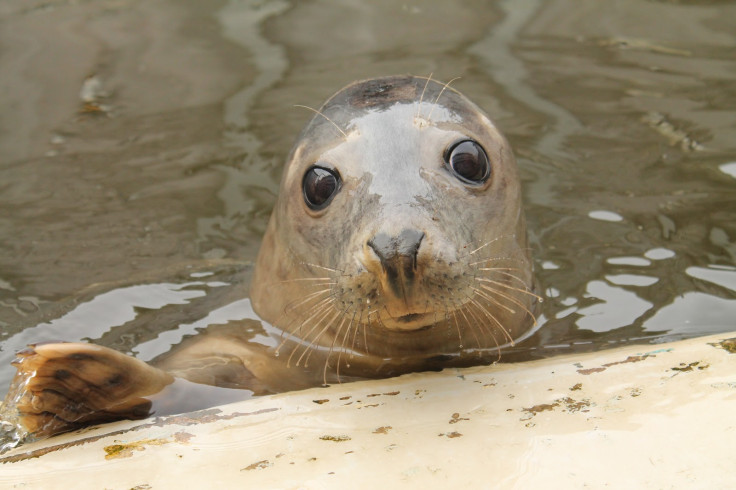Sneaky Seals Listen to Fish Tag 'Dinner Bells' For Easy Meal

Seals have learned to listen to scientific equipment in order to score a free meal in the form of fish tags, researchers have discovered.
Scientists at the University of St Andrews have found grey seals see the fish tags as dinner bells, alerting them to their next meal.
In their work published in the Royal Society journal Proceedings of the Royal Society B, researchers note that seals and other mammals are sensitive to noise from many different acoustic signals out at sea. While many have been found to avoid noises from human sources, however, seals have utilised the sounds as a source of information about the location of food.
Scientists use small tags to study fish at sea. The tags produce pinging sounds that allow researchers to track them. Grey seals can also hear the pinging sounds and have learned to use them as a dinner bell.
The team created a maze of boxes to hide fish. Most boxes were empty, but two had fish – one with a tag and the other without.
Seals were able to find the pinging box far quicker than the silent one, indicating they used the sound to direct them to the fish.
One of the researchers, Amanda Stansbury, said: "The seals found the tagged fish sooner and with less searching than the fish without a tag. This means that the seals learned to use the sound from the pinging tags to find where their food was hidden. This tells us that seals can exploit new sounds, such as fish tags, and use them to their advantage."

However, she also warned scientists must be aware of their use of acoustic tags, as it makes these fish more vulnerable to prey, thereby affecting the results of studies on fish.
"We expect that other marine mammals are similarly able to use such information to find prey ... When we make noise in the sea, we need to consider how animals are affected. Our results show that such effects can be complicated. In our case they were beneficial to the seal but bad for the fish. "
Previously, researchers at St Andrews had found grey seals use offshore wind turbines as feeding grounds, foraging around the structures for potential prey.
Led by Deborah Russell, the scientists tracked seal movements around the British and Dutch coasts, paying particular attention to their movements around wind farms and underwater pipelines.
Russell said: "I was shocked when I first saw the stunning grid pattern of a seal track around Sheringham Shoal," - an offshore wind farm in Norfolk.
"From the data we can infer that these individuals are foraging at the structures, likely as a result of a reef effect. The behaviour observed could have implications for both offshore wind farm developments and the decommissioning of oil and gas infrastructure."
© Copyright IBTimes 2025. All rights reserved.






















